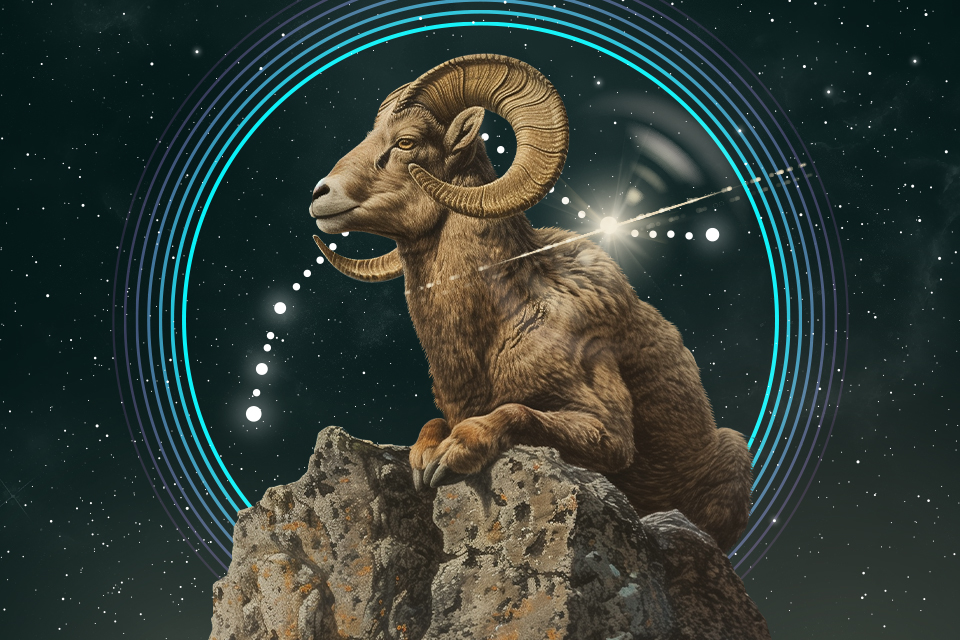According to astrologers, on March 21, the Sun entered the sign of Aries. However, real experts in astronomy know that it will appear in the corresponding constellation only on April 19. The latter is not so bright, but it deserves a story about it.

1. Why is the constellation Aries so called?
The constellation Aries is one of the zodiacal ones. Therefore, its name has been preserved since ancient times. It is known that the ancient Sumerians called it “ram”, so it is possible that this name comes from them.
However, the main myth that explains its name is Greek. According to legend, he is the ram named Creus, the son of Poseidon and Theophane. He had a golden fleece and could speak. And in Greece at that time there lived Phrixus and Helle, a brother and sister who were relatives of several gods and who were in danger of death.
Therefore, Creus was sent to rescue them. He carried them across the Black Sea to Colchis (modern Georgia), and Frix sacrificed him as a sign of gratitude and skinned him.
The gods took Creus to heaven and made the constellation Aries. And because of the golden fleece, an epic drama subsequently broke out. The Argonauts sailed behind him, making one of the first trips for a magical artifact in world literature.
2. How to find the constellation Aries?
There are only three really bright stars in the constellation Aries, so it’s not so easy to find it. Alternatively, you can use the Andromeda constellation to find Pisces and the bright star Aldebaran in Taurus. Exactly between them will be Aries.
As with any zodiac constellation, the time when its sign comes according to the horoscope is the worst for observing Aries stars. However, due to the shift in the real position of the sky relative to astrological calculations, it is still possible to do this.
It is necessary to “catch” the Aries constellation immediately after sunset, exactly at sunset. The main landmark is Jupiter, which is located near it at the end of March.
3. Where does Musca sit on Aries?
One of the interesting features of Aries is that it contains stars that were once a separate constellation. When it was proposed in 1612, it was called Apes. Later, again in the XVII century, it was renamed Wasp.
In the atlas of the Polish astronomer Jan Heweliusz, published in 1690, the constellation was called Musca and it was called that for a while. However, later scientists had to clarify that this was Musca Borealis. After all, there is another constellation with the same name in the southern hemisphere.
Finally, the name Musca was assigned to the southern stars, and the northern one was forgotten and included in the composition of Aries. Now these are the stars 41, 39 and 35 of this constellation. They have the third and fourth magnitude. Therefore, you can see them with the naked eye if you try hard. They are located between Hamal (the brightest star of Aries) and the Pleiades cluster in Taurus.
4. Which star in the Aries constellation is the brightest?
The brightest luminary of Aries is Hamal. It has an apparent magnitude of 2.0. In fact, it is a small red giant with a mass 1.5 times that of the sun. Over the 3.4 billion years of its existence, it has used up most of its hydrogen fuel and ballooned to a size 14 times the size of the Sun.
Despite this, Hamal has a discovered planet. It is a gas giant that is 80 percent heavier than Jupiter. It orbits the star in 380 days in a slightly elongated orbit. Judging by the distance to the sun, it belongs to the class of hot Jupiters.
5. Which star in the Aries constellation is the closest to us?
The constellation Aries is interesting because it contains as many as two stars included in the list of those closest to the Sun. The first of them is the Teegarden star. Despite the fact that the distance to it is 12.5 light years, it was discovered only in 2003. Because it is an extremely dim red dwarf, which few telescopes can see.
Despite this, three planets have already been discovered. At least two of them are located in the “zone of life” of the Teegarden star and have diameters 25 and 33 percent larger than earth. The third is a little smaller than our world and a little cooler.
The second star closest to us in this constellation is TZ Arietis. It is also a red dwarf, but larger than the Teegarden star. The distance to it is 14.5 light years. The mass is only 14 percent of the solar mass, and the radius is 16 percent of what our star has. There are no planets found in it.
Follow us on Twitter to get the most interesting space news in time
https://twitter.comne/ust_magazine


